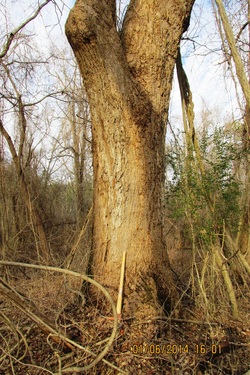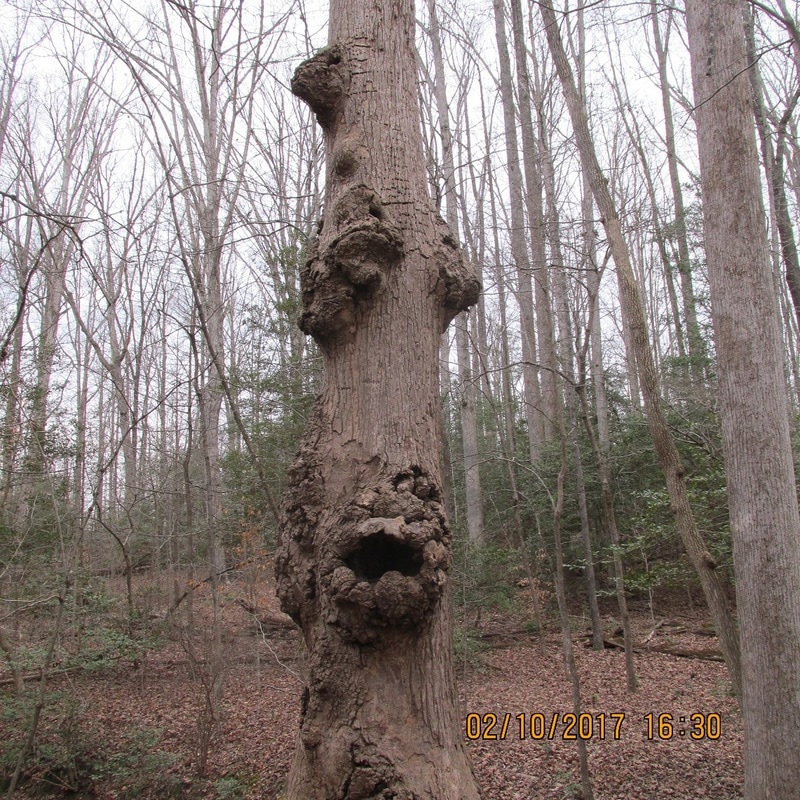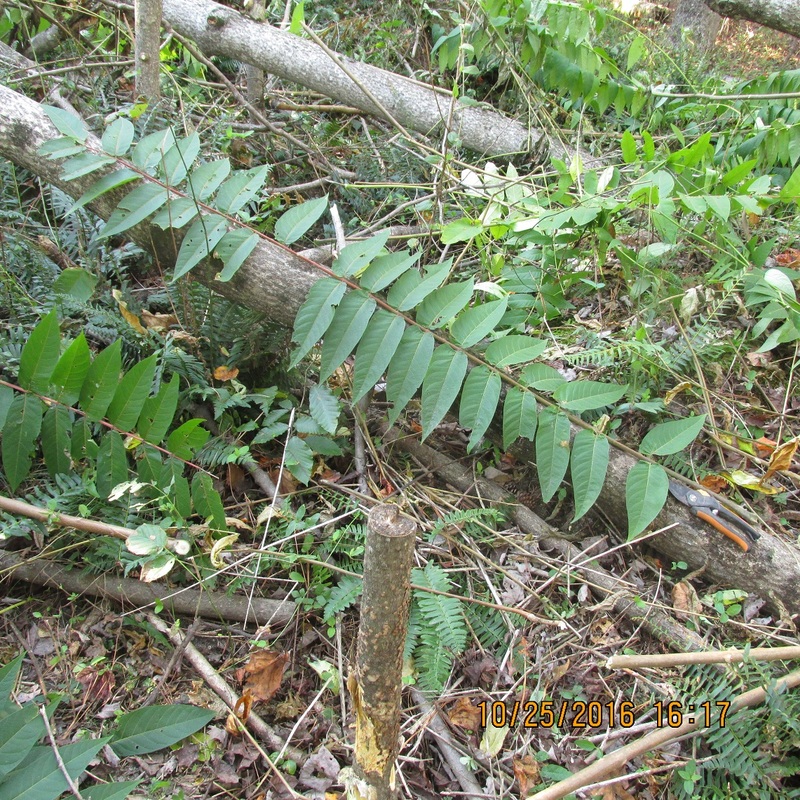|
Pocahontas has so many trees, we tend to take them for granted. A tree is a tree is a tree. You've seen one, you've seen them all. Well, maybe not. Our newest hiking trail feature's an imposing tuliptree, the Big Poplar. We've recently found an oak that's even larger in trunk girth. The tree pictured here is certainly unique, the stuff of monster stories, perhaps, or of forest gnomes.
0 Comments
There are scattered plants and scattered patches of Ailanthus (Tree of Heaven) throughout the park. Ailanthus is considered to be one of our "most unwanted" plants (interesting article here). With herbicide treatment available only on rare occasions, I try to uproot as many small trees as possible, and the larger ones I cut, leaving about three feet of stump. The tree then re-sprouts from that stump, and I go back periodically to cut off the sprouts, With sufficient persistence, this will eventually kill the tree. Returning to one of these sites today, a year after the initial cutting, I found that some of the stems had sprouted vigorous new shoots. So vigorous, in fact, that the leaves, which are compound, exceed the largest size given in the official plant descriptions. The leaf with its compound leaflets shown here is four and half feet long. Note the pruning shears along the base of the leaf.
 There’s something about big trees that grabs our attention. They are all older than we are; they were here long before we arrived. They are all bigger than we are; we must look up to see the whole of them. They are survivors. The biggest of them have been registered, with the Virginia Big Tree Program in our state, and with American Forests’ National Big Tree Program for the national champions. Chesterfield County has a state champion Eastern Cottonwood, with a girth of 25 feet. Pocahontas State Park doesn’t boast any trees of that stature. The park was carved out of lands that had been harvested of their timber, and some of it had been replanted to loblolly plantations. Timber harvest continued until recently in parts of the park that were designated as State Forest. So what we see now is mostly trees less than a century old. Still, there are a few exceptions. Pictured here is a Tuliptree with a girth of just over 11 feet, impressive to stand beside though far short of the champion in Chesapeake County with a girth of over 32 feet. --Ben |
The NaturalistThoughts on the park, its residents and how to preserve its natural beauty. Archives
September 2019
Categories
All
|



 RSS Feed
RSS Feed
